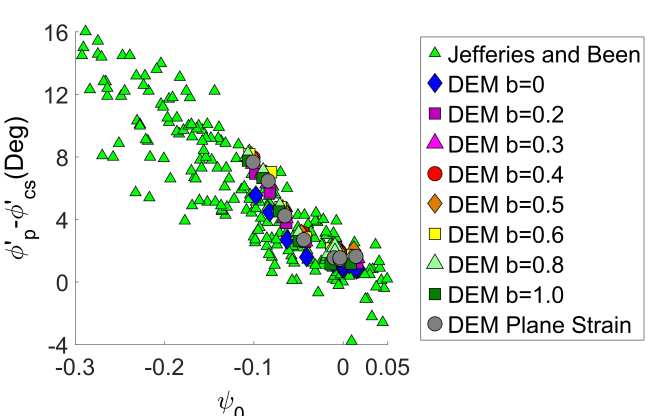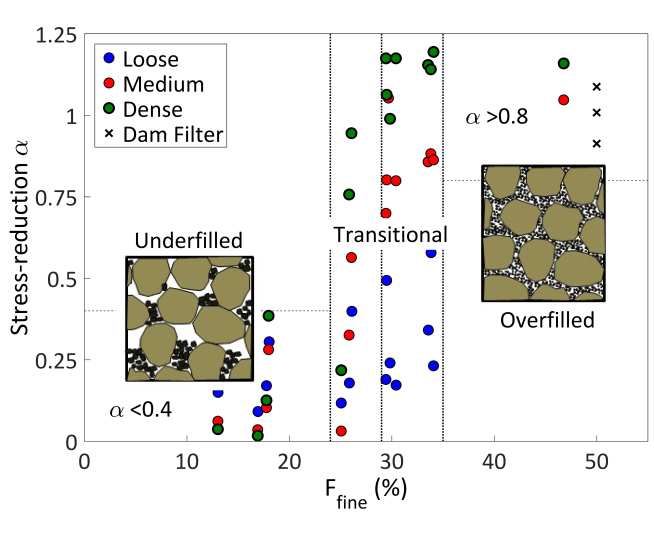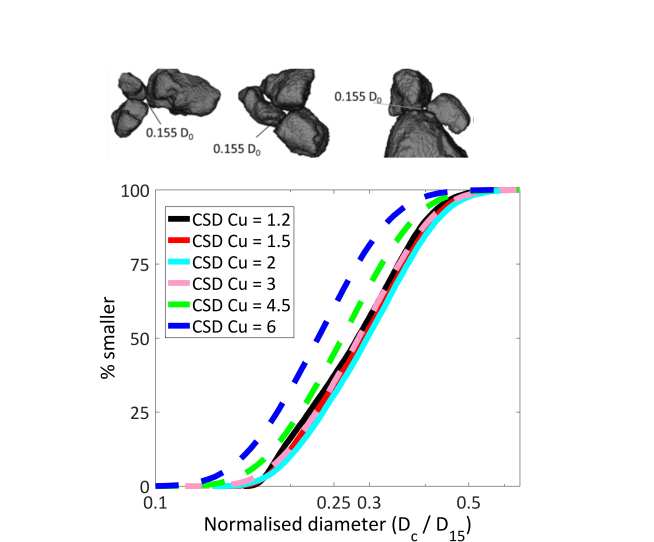The discrete element method (DEM) models the motion and interaction of individual grains. DEM-related research in Geotechnics is led by Prof. Catherine O’Sullivan and considers soil strength, stiffness and permeability. Simulations are often run using high performance computers including the UK national facility ARCHER. This research is complemented by data obtained using high resolution micro computed tomography (microCT) data.

DEM simulations using LAMMPS have shown that the difference between the peak strength and the critical state depends on the initial state parameter. This dependency is independent of particle shape and the value of the intermediate principal stress. It would be very difficult to obtain the data needed to show this phenomenon using laboratory tests.

DEM simulations were used to revisit the earlier hypothesis bySkempton and Brogan (1994) and confirm that the proportion of stress in the finer fraction of a gap graded material depends on the fines content. These simulations identify a transitional zone in which the ability of the material to resist internal erosion depends on the relative density. The findings can inform the selection of material for embankment dam and levee construction.

Constrictions (the narrow openings in the void space in sand) govern permeability and filtration properties. DEM simulations have shown the distribution of the constriction sizes normalized by a characteristic diameter, does not vary with the coefficient of uniformity of sand. Computational fluid dynamics simulations of flow in the void space (using microCT data) have explored the fundamentals of sand permeability.
Contact Geotechnics
Geotechnics
Civil and Environmental Engineering
Skempton Building
Imperial College London
South Kensington Campus
London, SW7 2AZ
Telephone:
+44 (0)20 7594 6077
Email: j.otoole@imperial.ac.uk
Alternatively, view our people lists
Follow us on Twitter: @GeotechnicsICL
We are located in the Skempton Building (building number 27 on the South Kensington Campus Map). How to find us
